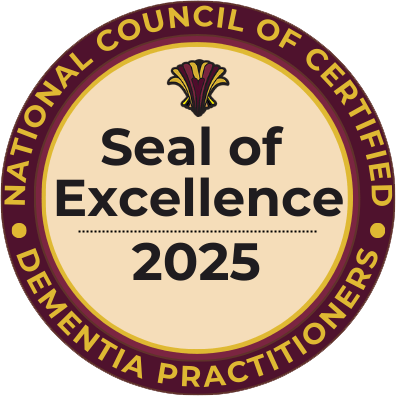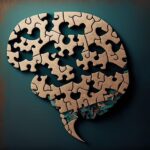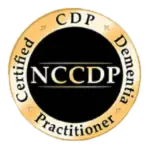The presence of dementia and hallucinations often presents significant challenges for both individuals experiencing them and their dedicated caregivers. These sensory disturbances, which involve perceiving things that do not actually exist, cause confusion and distress.
Understanding the root causes of these perceptions provides a foundation for developing effective coping mechanisms and supportive care plans. We recognize the profound impact these experiences have on daily life for those affected by Alzheimer’s disease and dementia.
Differentiating Hallucinations from Delusions
Hallucinations involve sensory perceptions that occur without an external stimulus, meaning a person sees or hears something that simply does not exist. For example, an individual might report seeing small children playing in the living room when no one else is there. These experiences are vivid and often feel incredibly real to the person experiencing them, making them difficult to dismiss or ignore. Recognizing the distinct nature of these sensory events helps caregivers respond appropriately and with empathy.
Delusions, conversely, represent false beliefs that a person firmly holds despite clear evidence to the contrary, differing from the sensory nature of hallucinations. An individual might believe that family members are stealing their possessions or that people on television are talking directly to them. These beliefs are often systematized and resistant to logical reasoning or factual correction. Understanding this distinction enables caregivers to tailor their responses to either a misperception or a fixed, false conviction.
Staying Calm When Hallucinations Occur
Maintaining a calm demeanor remains paramount when a person living with dementia experiences a hallucination, as your reaction directly influences their emotional state. A caregiver’s anxiety or fear can easily transfer to the individual, escalating their distress and making the situation much worse. Speak in a gentle, reassuring tone and maintain an open, relaxed body language. This steady presence helps create a sense of security during a confusing moment.
Focus your efforts on validating the person’s feelings rather than arguing about the reality of the hallucination, which often proves counterproductive. Acknowledge what they see or hear without confirming its existence, for instance, “I understand you see a dog, and that must feel very real to you.” Your calm approach communicates empathy and support, which helps de-escalate the situation and reduce their agitation.
Validating Feelings Without Reinforcing Fear
Validating the feelings of a person experiencing a hallucination allows them to feel heard and understood, even if their perception is not real. Respond to their emotions, such as fear, confusion, or discomfort, by acknowledging their experience without agreeing with the hallucination itself. Say something like, “It sounds like you feel frightened right now,” to address their emotional state directly. This approach builds trust and reduces potential conflict.
Avoid directly confronting the hallucination or attempting to convince the individual that what they perceive is not real, as this often increases their distress and agitation. Instead, gently redirect their attention to something familiar and comforting in their environment. Focus on their feelings, providing comfort and reassurance, and show them you are there to support them through the confusing experience.
Redirecting Attention to Reduce Distress
Gently redirecting an individual’s attention away from a hallucination often helps reduce their distress and shift their focus to reality. Suggest moving to a different room, engaging in a preferred activity, or listening to calming music. Offer a favorite snack or a simple task to complete, providing a distraction from the disturbing perception. This change in focus can often break the cycle of the hallucination and its associated anxiety.
Choose activities that the person enjoys and finds comforting, making the redirection feel natural and pleasant rather than forced. For example, if they love looking at old photographs, bring out an album and start a conversation about the happy memories it evokes. This gentle shift in attention helps to ground the individual in the present moment and lessen the impact of the visual or auditory disturbance.
Creating a Safe Environment at Home
Creating a safe and predictable home environment greatly reduces potential triggers for hallucinations and helps to minimize confusion for individuals with dementia. Ensure good lighting throughout the house, especially in hallways and bathrooms, to prevent misinterpretations of shadows or dimly lit objects. Remove clutter and rearrange furniture to create clear pathways, reducing the likelihood of falls or disorientation. A familiar and uncluttered space promotes a sense of security.
Minimizing sensory overload also contributes to a calm and safe environment, which helps manage dementia and hallucinations. Keep noise levels low, avoid bright, flashing lights, and maintain a comfortable room temperature. Consistent routines provide structure and predictability, which can lessen anxiety and confusion for the individual. A well-organized and peaceful home supports their overall well-being.
Using Simple Language to Provide Reassurance
When communicating with someone experiencing a hallucination, use clear, simple language that is easy for them to process and understand. Speak in short, direct sentences, avoiding complex explanations or abstract concepts. Your goal is to provide reassurance and clarity, rather than challenging their perception. For example, instead of saying, “There is nothing there, it’s just your mind playing tricks,” try, “I am here with you, and you are safe.”
Repeat important phrases calmly and patiently if necessary, recognizing that their ability to comprehend may fluctuate during these episodes. Maintain a warm and comforting tone of voice, which conveys empathy and support even if the words are not fully grasped. Simple, consistent reassurance helps to reduce anxiety and create a sense of security for the individual.
Avoiding Arguments Over False Perceptions
Engaging in arguments with a person experiencing hallucinations or delusions often proves unproductive and can escalate their distress and agitation. Their perceptions feel completely real to them, and challenging their reality typically leads to frustration for everyone involved. Focus on their feelings and provide comfort rather than attempting to logically disprove what they see or believe. This approach preserves their dignity and reduces conflict.
Shift the conversation away from the hallucination itself and toward something familiar and comforting, or simply acknowledge their feelings without confirming the false perception. Remember that reason does not work against a delusion, and empathy provides a more effective response. Maintain a calm and supportive presence, demonstrating that you are there to help them feel safe and understood.
Monitoring Triggers Like Fatigue or Stress
Caregivers should diligently monitor for potential triggers that might exacerbate or induce hallucinations in individuals with dementia, such as fatigue or increased stress. A lack of sleep or heightened emotional tension often correlates with an increase in visual or auditory disturbances. Establish consistent sleep routines and create a calm environment to promote restful sleep. Recognizing these patterns helps proactively manage their well-being.
Observe for signs of physical discomfort, illness, or changes in medication, as these factors also contribute to heightened confusion and the onset of hallucinations. Keeping a journal to track these occurrences and potential triggers can provide valuable insights for healthcare providers. Proactive monitoring helps identify patterns and informs strategies for prevention and management.
Consulting Healthcare Providers for Medication Options
Caregivers should consult with healthcare providers when hallucinations become frequent, distressing, or significantly impact the individual’s quality of life. Medical professionals can thoroughly assess the situation, rule out other potential causes, and determine whether medication adjustments are necessary. A doctor can explain the benefits and risks associated with different treatment options, helping to make informed decisions.
Discuss all existing medications with the healthcare team, as some drugs can contribute to or worsen hallucinations as a side effect. The provider might suggest different dosages or alternative medications to help manage the symptoms effectively. Working collaboratively with medical experts ensures the development of a comprehensive care plan that addresses challenging behaviors and enhances the individual’s overall comfort.
Advance Your Expertise with a Certified First Responder Dementia Trainer at NCCDP
Ready to advance your knowledge and dedication in dementia care? We at NCCDP passionately offer comprehensive certifications, including our renowned Certified Dementia Practitioner program. We also offer a range of specialized training and seminars focused on Alzheimer’s disease and dementia care. Our extensive continuing education opportunities, including online courses and live webinars, help professionals at all levels enhance their expertise.
Become a certified first responder dementia trainer with us and strengthen your skills today. You can also achieve your CFRDT-certified first responder status through our expert-led programs. Join the NCCDP community and elevate your commitment to quality care.























